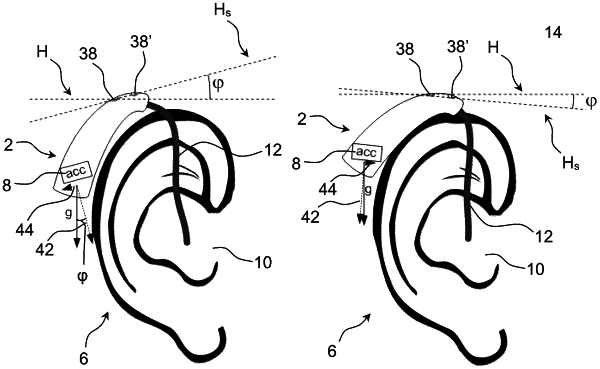| CPC H04R 25/305 (2013.01) [H04R 1/1041 (2013.01); H04R 1/406 (2013.01); H04R 25/407 (2013.01); H04R 25/453 (2013.01); H04R 25/505 (2013.01); H04R 25/65 (2013.01); G01C 9/00 (2013.01); H04R 2225/0213 (2019.05); H04R 2225/31 (2013.01); H04R 2225/41 (2013.01); H04R 2225/55 (2013.01); H04R 2430/20 (2013.01); H04R 2460/03 (2013.01)] | 20 Claims |

|
1. A hearing aid device for improving, augmenting and/or protecting the hearing capability of a user when receiving acoustic signals from the surroundings of the user, the hearing aid device comprising
a behind the ear (BTE) part and an ear piece connected via a tube and/or a cable,
an input unit for generating corresponding audio signals,
a signal processing unit for modifying the audio signals, and
an output unit for providing modified audio signals as audible signals to at least one of the user's ears,
the hearing aid device comprising a sensor member for detecting the movement and/or acceleration and/or orientation and/or position of the hearing aid device,
the input unit of the hearing aid device comprises a first microphone and a second microphone, and
a control unit for determining an angle of the hearing aid device based on measurements provided by the sensor member, said angle being defined as the angle between a line along which said first and second microphones are arranged and a horizontally arranged line, and wherein the hearing aid device is configured to determine how much the length of the tube and/or of the cable should be adjusted in order to place the hearing aid device in an optimal position.
|